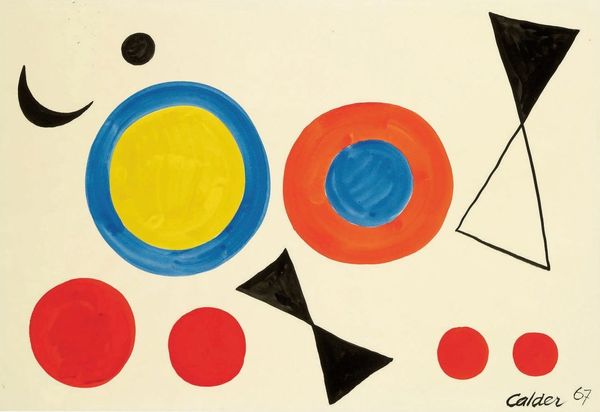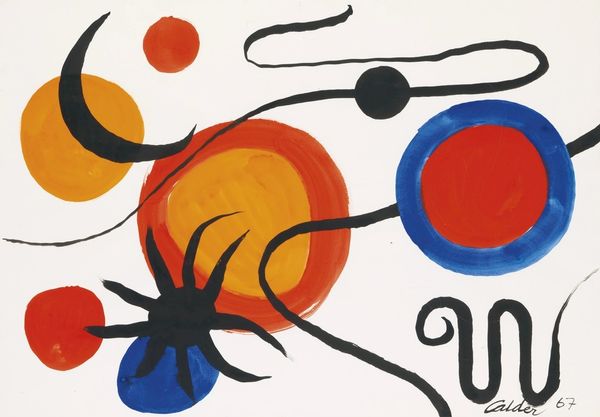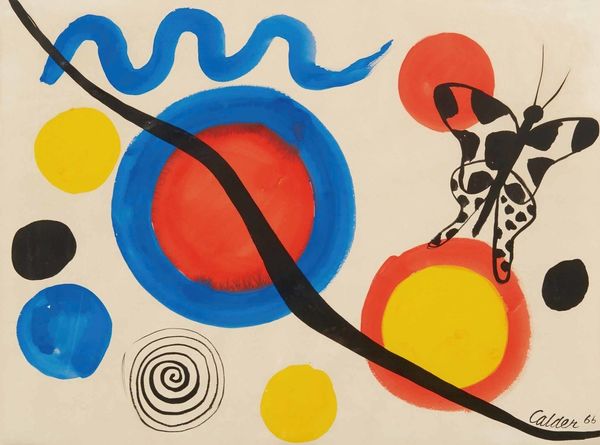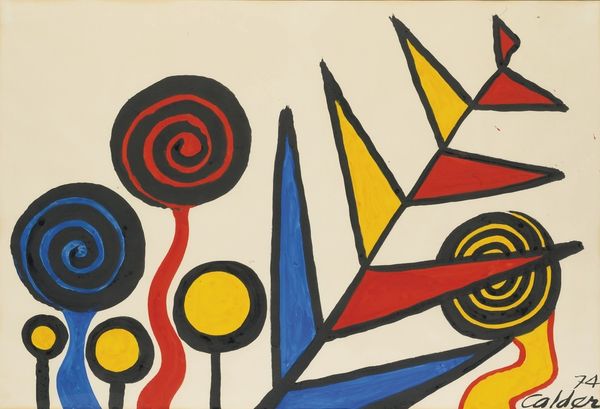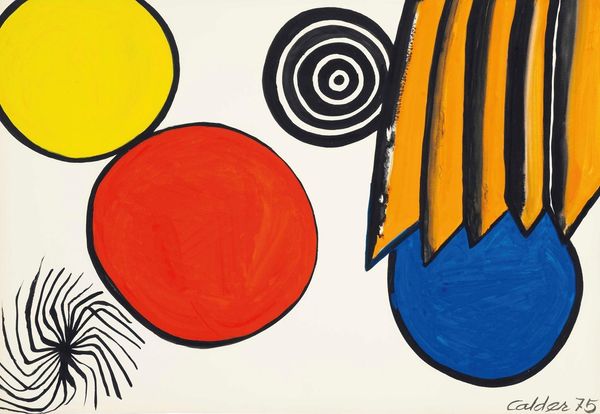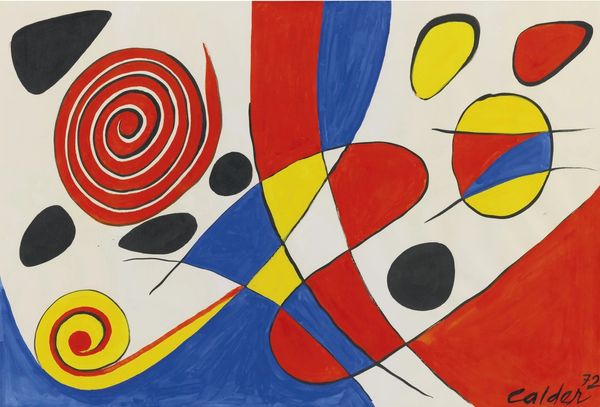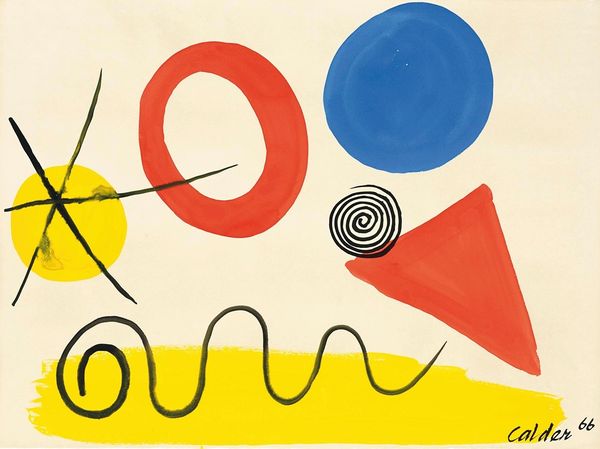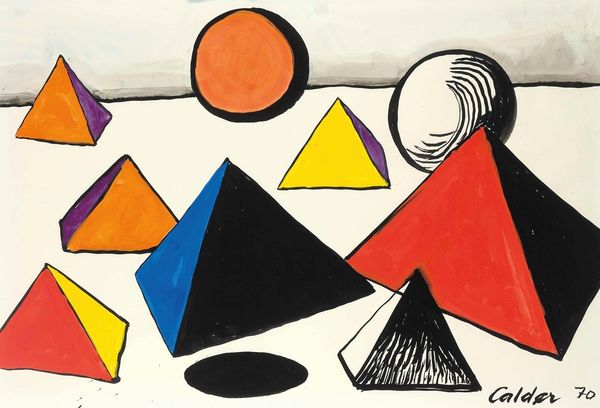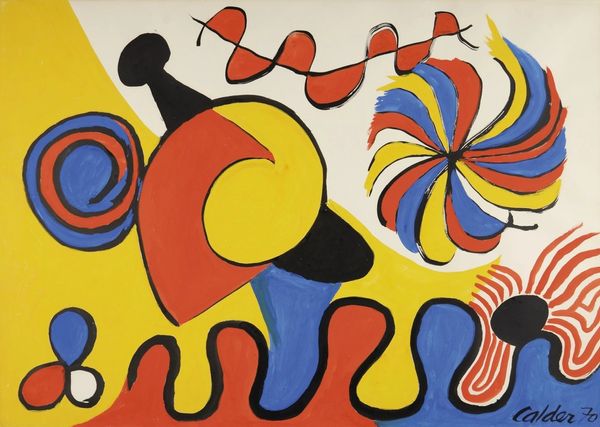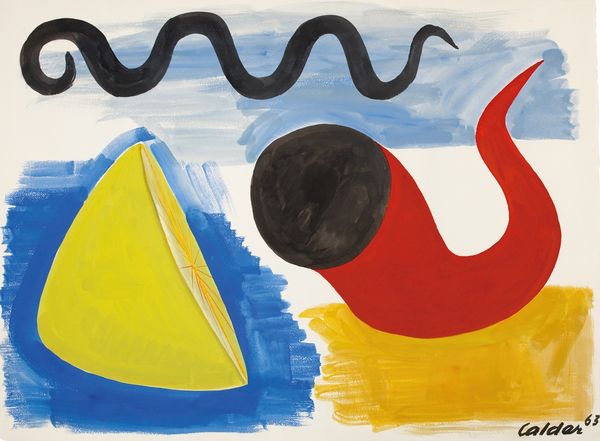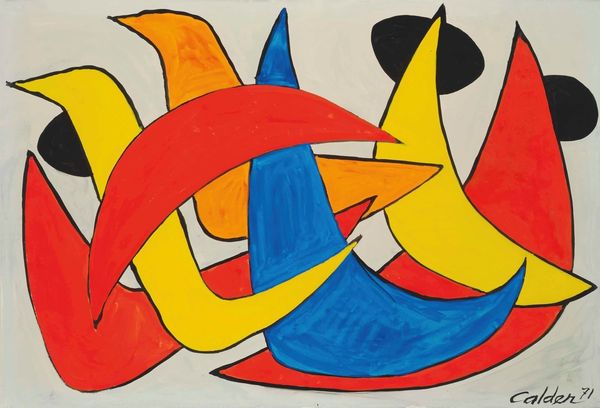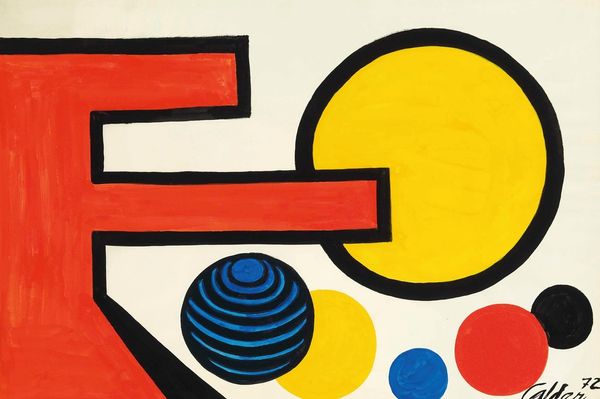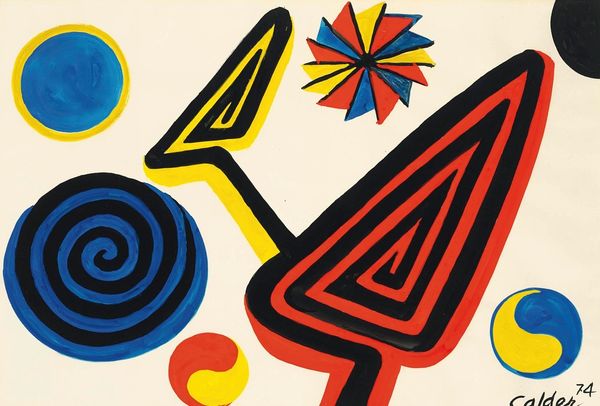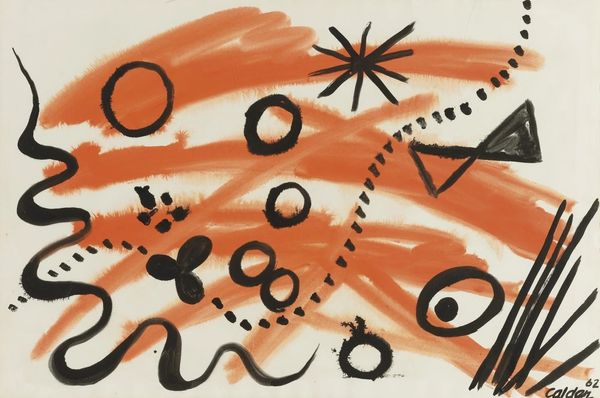
Copyright: Modern Artists: Artvee
Editor: This is Alexander Calder’s "Project for 'The Universe' #1," made in 1973 with mixed media and acrylic paint. It feels like a playful, almost childlike depiction of astronomical bodies, but something about the stark colors and precise lines gives it a more serious, modern edge. What do you see in this piece, considered in its time and place? Curator: What immediately strikes me is how this seemingly simple composition intersects with the burgeoning public interest in space exploration in the 1970s. Calder, known for his mobiles that democratized sculpture, translates his interest in kineticism and movement to a static, two-dimensional surface. This wasn't just about pretty shapes; it reflected a society captivated by the cosmos and a desire to understand our place within it. Do you notice how the use of primary colors and geometric forms contributes to its accessibility? Editor: Yes, the colors and shapes are very accessible, like building blocks almost. But were people really thinking about art reflecting space exploration? I thought of pop art, more like everyday objects or comic books turned into art. Curator: Indeed, the Pop Art movement certainly plays a role. By simplifying and abstracting the "universe," Calder mirrors Pop Art's strategies, where accessibility challenges traditional notions of 'high art' subjects and who it’s for. The social democratisation of imagery and information, from magazines to museum walls, went hand in hand. How do you see that applying here? Editor: So it’s like he is “popularizing” the universe, making it less intimidating, less elitist maybe? I didn’t think of it that way. Curator: Precisely. By merging artistic expression with the prevalent fascination for the universe, Calder situates his art within a broader cultural and historical context, transforming it from a mere collection of shapes into a commentary on society’s shifting perceptions. Editor: I see what you mean. Looking at it now, it feels more like a social statement than just pretty colours and shapes. It's like art was trying to catch up with science and society's dreams about space. Curator: Absolutely. And art is a key venue to investigate that interaction! Thanks for making it clear for the audience.
Comments
No comments
Be the first to comment and join the conversation on the ultimate creative platform.
